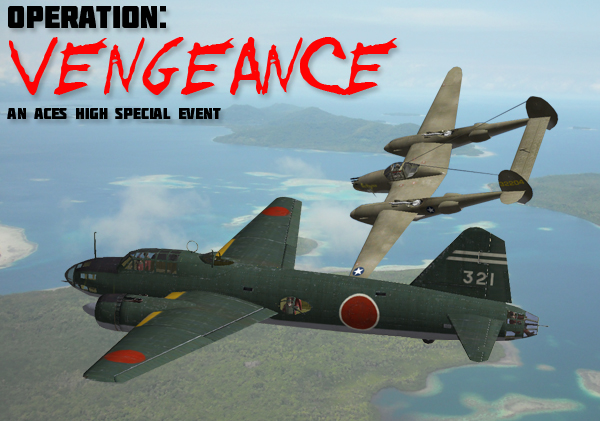Operation Vengeance
The Setting – Guadalcanal, April 1943
After the evacuation of Guadalcanal by Japanese forces in early February 1943, the Allies began to build their forces for an eventual push up the Slot, up the Solomon Islands and onto Rabaul. Reeling from the defeat at Guadalcanal, On April 1st the Japanese commanders Admirals Isoroku Yamamoto and Jinichi Kusaka launched an aerial counter-offensive called Operation I-Go that would target ships, airfields, and installations on Guadalcanal and the newly occupied Russell Islands as well as targets on the other side of Solomon Sea in New Guinea.
Heavy fighting began April 1st with a major air engagement near the Russell Islands and although the island was clear of Japanese forces, the fighting in the air seemed far from over. On April 7th, Over 50 D3A “Val†dive bombers, escorted by over 100 A6M “Zero†fighters attacked shipping anchored off Guadalcanal sinking a tanker and two destroyers. Complementing the veteran F4F Wildcats in the defense of Guadalcanal that day were P-38 Lightnings, P-39 Airacobras, P-40 Warhawks, and the newer F4U Corsair.
On April 14th, after another major attack on Port Moresby and Milne Bay in New Guinea, Admiral Yamamoto would order an inspection tour of his air units that were involved in Operation I-Go. Little did Yamamoto know but the US had intercepted this message and decoded it using their JN-25D decryption cypher.
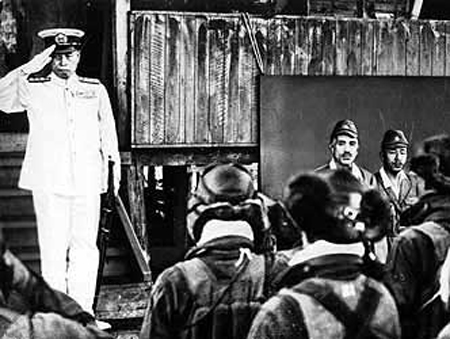
The Message – April 14th 1943
US Naval Intelligence code named “MAGIC†intercepted the orders that were directed to the air units that were participating in the I-Go operation. The messages carried the itinerary of the Admiral as he made his way from Rabaul to Balalae, near Bougainville Island. It carried the details of his flight of G4M1 “Betties†and his escort of six A6M “Zero†fighters.
Intelligence quickly passed the message up the chain of command to Admiral Chester Nimitz. Admiral Nimitz and his Intelligence Officer Commander Ed Layton discussed the idea of intercepting Yamamoto. Nimitz was concerned that it might expose the fact that the Japanese codes had been broken, or even that Yamamoto might get replaced with someone even better. It was decided that the broken codes could be hidden and they got approval from President Roosevelt with the highest priority to move forward with a plan to intercept and shoot down Admiral Yamamoto.
The Mission – April 18th 1943
From the beginning the Allied planners new they had no choice but to use the Lockheed P-38G’s of the 339th Fighter Squadron, 347th Fighter Group. The 600 mile trip out over the sea and the 400 mile straight return meant that the P-38 was the only fighter aircraft at Guadalcanal that had the range to make the interception. Loaded with two different sized external drop tanks and specially added ships compasses to help with the long-distance flight over water.
The group was to launch 18 P-38Gs, with 4 of them being designated as the “killer†flight. The remaining 14 pilots were to act as cover while the killers intercepted Yamamoto, now codenamed Dillinger. The 339th was formally given the mission but 8 of the 10 pilots were from the two other squadrons of the 347th. They would take off at 07:25 local time and lose two P-38s almost immediately to mechanical issues. They would travel right off the deck at wave top all the way to the interception point using their ships compasses and dead reckoning all while in radio silence. The longest interception mission of World War 2 had been executed perfectly and at 09:34 the P-38s caught visual of Yamamoto and his escorts making the descent down into Balalae.
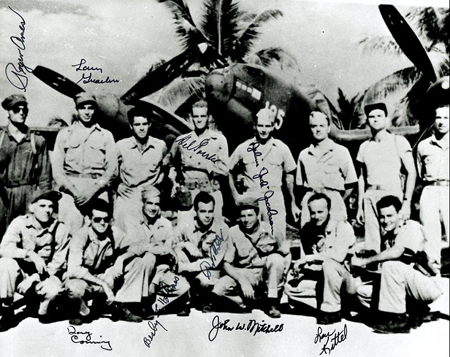
The Interception – Killing Admiral Isoroku Yamamoto
When the Admiral and his escorts were spotted, the Killer flight began to climb and turn alongside the group to intercept. The Zero escort fighters turned into engage as the bombers dove and turned away. When the external fuel tanks on Lt Holmes aircraft failed to detach, he and his wingman Lt Hines disengaged. Major Mitchell then ordered Captain Lanphier and his wingman Lt Barber to engage. Lanphier turned head-on into the diving escorts while Barber turned towards the diving bombers. In the maneuver, Barber had lost sight of the bombers but when he came around one of the G4M1 appeared directly in front of him and he opened fire, raking the Betty from the right engine to the left engine. The bombers left engine began to stream black smoke and the Betty rolled violently to the left, nearly colliding with Barber. Seconds later the Betty crashed into the jungle canopy leaving a plume of black smoke rising from the trees. Unbeknownst to any of the P-38 pilots at the time, Yamamoto was aboard that G4M1.
Barber then turned back out to sea, spotting the second bomber being engaged by Lt Holmes who had finally got his tanks jettisoned. The second bomber was trailing white smoke but Lt Holmes and Hines were going too fast and overshot. Barber then opened fire on the second Betty, causing it to lose parts that would damage his P-38. The G4M1 then crash landed in the sea with 3 survivors, one of them being Vice Admiral Matome Ugaki. At that moment Barber, Holmes and Hines became under attack by the Zero escort, Barbers plane had sustained damage from enemy fire and the remaining P-38s attempted to engage the Zeros. Major Mitchell spotted the smoke rising from Yamamoto’s crashed Betty and with fuel reaching critical levels he ordered the P-38s to return to base. At some point during the engagement Lt Hines was lost, but no one saw his P-38 crash. Lt Holmes was forced to land at the uncompleted airfield on the Russell Islands. In a major breach of security as he approached Henderson field, Captain Lanphier radioed Guadalcanal: “That son of a bitch won’t be dictating any peace terms at the White Houseâ€. Lanphier was so low on fuel that he had an engine quit while on final at Henderson field at Guadalcanal. Immediately upon landing Captain Lanphier would put in a claim for shooting down Yamamoto’s bomber.
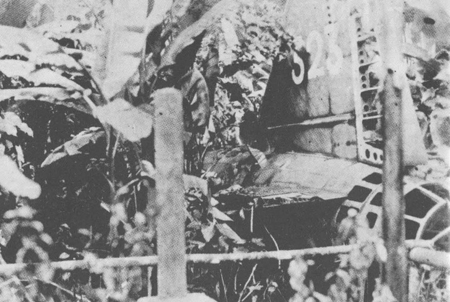
The Aftermath – Dillinger’s Demise
Yamamoto’s crash site was found by a Japanese search party on April 19th and his body was cremated in nearby Buin. The people of Japan weren’t notified of his death until May 21st, 1943, just two days before his ashes returned to Japan aboard the Battleship Musashi. The exact details of his death concealed to the Japanese public. The US, in an attempt to keep the fact that the Japanese codes had been broken secret, used the same story it told to the 339th pilots that Yamamoto was observed boarding the bomber by a Coastwatcher.
Shooting down the Admiral did not come without controversy. Immediately after the mission Capt Lanphier was credited with shooting down Yamamoto and he later reported that Barber shot down another bomber which also crashed into the jungle. Initially the mission debrief concluded that three bombers had been brought down including the one shot down into the sea by Lt Holmes. Of the three claimed bomber kills, only Capt Lanphier’s was not visually confirmed.
After the war it was later confirmed by the only surviving Japanese escort, Kenji Yanagia, no Zero fighters had been lost and he had not witnessed the loss of Lt Hine. Japanese military records also confirmed that only two G4Ms had been lost, so the Air Force credited half kills to both Lanphier and Barber for the jungle kill and Barber and Holmes for the ocean kill. Nearly 50 years after the shoot down and 4 years after Lanphiers death, Barber would petition the USAF board for correction of Military Records to have his half kill turned into a whole kill. The board was split on the decision and ruled to keep it as a half kill. Barber attempted to appeal it the US Court of appeals, but they refused to hear the case. Lanphier continued to claim he shot down Yamamoto until he passed away in 1987 while Barber contested through written and spoken accounts until his death in 2001.
Later in 2006, new evidence surfaced in the form of a letter from Doug Canning, another pilot in the mission. The letter stated that Lanphier and Barber had agreed to share the kill until Barber found out that Lanphier had written several articles and accounts that he alone shot down Yamamoto’s Betty. This evidence and Yanagia’s account led the USAF to remove Lanphiers Zero credit and his Ace pilot status.
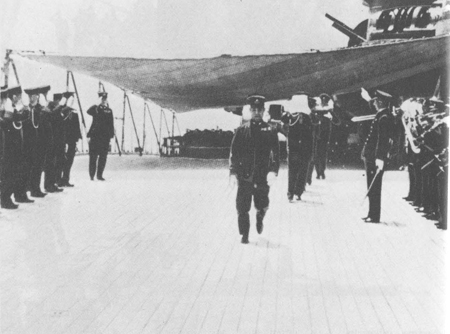
Operation Vengeance: One Man, One Mission
Operation Vengeance will be an Aces High special event based on the events of Operation: Vengeance, which took place on April 18th 1943. Unlike past scenarios which usually encompass entire campaigns, fronts or a major air action, this event will focus on the USAAF special mission to shoot down Admiral Yamamoto. The event is designed around a smaller, limited registration and will be 1 frame only. Historically, the USAAF launched 18 P-38s to 6 A6M3s, for gameplay concessions we will switch the numerical superiority to the Japanese with 36 A6M3s.
When? Where?
DECEMBER 7th, 2019 15:00 EST/20:00 GMT - SEA2
REGISTRATION OPENS: NOVEMBER 1ST 15:00 EST/20:00 GMT
Available Squadrons/Units
General Rules
- No aircraft shall cross north of the 19 line and west of the 2 line.
- Flight will be enabled every 60 minutes for 10 minute intervals from T+0 to T+180.
- Flight will be disabled for the remainder of the event after Hour 3. (T+180)
- Walk-ons will only be permitted in the case there is a no-show.
- Players not in proper uniform as indicated in the Available Squadrons/Units list will not be permitted to launch or be observer/gunners.
- Logs will close when all players are down.
Imperial Japanese Navy and Army Air Force Rules
- Two Axis pilots must be selected to fly G4M1s. One pilot will represent Admiral Yamamoto and the other will represent Vice Admiral Ugaki. These players’ names must be given to the setup CM sometime before game day. Substitutions can be made so long it is made before launch. (T+0)
- The Yamamoto and Ugaki G4M1s must launch from A37 at the start of the event. (T+0)
- The Yamamoto and Ugaki G4M1s must be landed and towered out at A17, A14 or A11 by T+180.
- Six A6M3 Model 32 pilots must be designated the “Yamamoto Escort†These players’ names must be given to the setup CM sometime before game day. Substitutions can be made as long as it is made before launch. (T+0)
- The six A6M3 Model 32 “Yamamoto Escort†pilots must launch from A37 with the G4M1s at the start of the event. (T+0)
- The remaining 30 A6M3 Model 32 Pilots may only launch from A37, A26, and A17 at the start of the event. (T+0)
- After launch (T+10) A6M3 Model 32’s will be disabled.
- At T+60 A6M2s and Ki-43-IIs will be enabled at A37, A26 and A17.
- At T+120 A6M2s and Ki-43-IIs will be enabled at A14.
- At T+180 A6M2s and Ki-43-IIs will be enabled at A11.
United States Army Air Force Rules
- Four P-38G pilots must be designated the “Dillinger Killer Flight†These players’ names must be given to the setup CM sometime before game day. Substitutions can be made so long as it is made before launch. (T+0)
- All P-38G pilots must launch from A3 at the start of the event. (T+0)
- After launch (T+10) P-38G’s will be disabled.
- At T+60, T+120, and T+180 P-39D’s and P-40F’s will be enabled at A3.
MAP

Objectives and Scoring
The main objective in this event are simple and straight forward. The Japanese forces must land their two G4M1s at one of the three available landing airfields (A17, A14 or A11) before Hour 3 ends (T+180). The US forces must intercept them and shoot them down during that same time frame.
In addition to the main scoring objectives there will be additional bonus points for both sides. Scoring for aircraft are based on a set number, if you do not reach that number the points are not awarded. Please use the charts below as a reference. At the end of the event, the items accomplished will be highlighted.
Kills are anything BUT a Successful landing. Any type of Loss, whether by enemy or not, (Ditch, Crash) is recorded as a KILL.
Allied Score Card
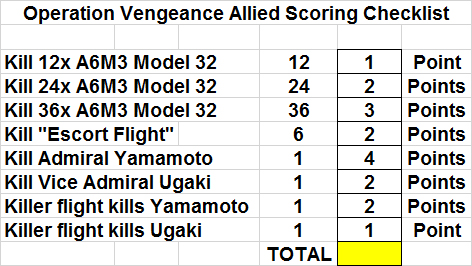
Axis Score Card

Scoring Examples
Here are three scoring examples. In the first one, The Allies shoot down 16 A6M3 Zero’s, the Escort flight, Yamamoto, and Ukagi who was killed by the Killer flight for a total of 10 points. The Axis shot down 14 P-38s including the Killer flight for a total of 5 points.

In this second one, The Allies shoot down 27 A6M3 Zero’s and the Escort Flight for a total of 5 points. The Axis shot down 11 P-38s and landed Yamamoto and Ukagi at A14 for a total of 9 Points.

In this third one we demonstrate a tie in score. The Allies shoot down all the A6M3 Zero’s and the Killer flight kills Ukagi for a total of 9 Points. The Axis shot down 14 P-38s and landed Yamamoto at A11 for a total of 9 Points.

Settings
- Solomons Terrain
- Icon Range – Friendly 3K, Enemy 3K
- Radar Disabled for all countries
- Fighter and Bomber Warning Range – 63360 (12 Miles)
- Tower Range – 63360 (for display to match Warning Ranges)
- External view for Bombers (F3) – ON
- Enemy Collisions – ON
- Friendly Collisions – OFF
- Fuel – 1.0
- Ack – 1.0
- Formations – DISABLED
- Visibility – 17 miles
- Object Downtime – full (200)
- Winds – NONE
- Game Clock and Date – 06:00 – April 18th 1943
- CLOUDS: Light5k.awa (standard event file)
